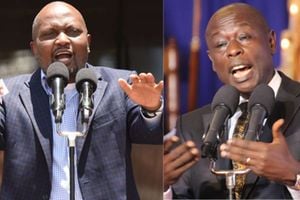For sports journalists, challenges come from very unlikely quarters

Jamaica's Shelly-Ann Fraser-Pryce celebrates after winning the Women's 100m final at the 2019 IAAF World Athletics Championships at the Khalifa International Stadium in Doha on September 29, 2019.
What you need to know:
- The old challenges facing the media aside, there are moments when athletes unwittingly become a major hindrance to the pursuit of a good story
In many respects, journalism is the compass with which we navigate through life.
Journalists sieve through the cacophony that life presents us with, shutting out the noise to help us make sense of the world.
Tomorrow is World Press Freedom Day, a day of reflection among media professionals about issues of press freedom and professional ethics.
According to the United Nations Educational, Scientific and Cultural Organisation (Unesco), the day should act as a reminder to governments of the need to respect their commitment to press freedoms.
But journalists have also lost a source of livelihood as media houses struggle to remain afloat amid the Covid-19 pandemic. For sports journalists, suspension of sporting activities to contain the spread of Covid-19 has meant there are no tournaments to cover.
This is in addition to the old challenges facing the media globally as publications are censored, fined, suspended and closed down by state actors.
According to Unesco, journalists, editors and publishers have been harassed, attacked, detained and even murdered.
According to a report published last year by the Human Rights Watch, at least six people died from violence meted out on them by police officers during the first 10 days of Kenya’s dusk-to-dawn curfew, imposed on March 27 last year to contain the spread of Covid-19.
NTV journalist Peter Wainaina is among those who were assaulted in Mombasa on March 27 last year.
As we mark the World Press Freedom Day on Monday, we should take a moment to reflect on the role journalists play, sometimes in the face of seemingly insurmountable challenges.
But in sports journalism, sometimes the biggest challenge arises from unlikely quarters - the sources themselves. There are moments when athletes unwittingly become a major hindrance to the pursuit of a good story.
Perhaps out of ignorance, the average Kenyan sportsman or sportswoman does not appreciate the role the media plays in advancing their careers by highlighting their performances in sports and in other activities outside the sports arena.
They are either too introverted and inward-looking to identify and take advantage of media opportunities around them to further their careers, or get too timid before the microphone and squander the chance to market themselves and their country when the cameras are focused on them.
I have been lucky enough to cover global sporting championships and interacted with media-savvy athletes who effortlessly field questions from journalists. Four-time world 100 metres champion Shelly-Anne Fraser-Pryce from Jamaica immediately comes to mind.
After winning her fourth 100m athletics world title in 10.71 sec, just one-hundredth of a second outside her own personal best at the 2019 World Athletics Championships in Doha, Fraser-Pryce flashed her customary smile and went on a lap of honour at the Khalifa International Stadium with her two-year old son Zyon, then spoke of her joy in juggling between family and sport.
Multiple Olympics and world champion over 100m and 200m, Usain Bolt from Jamaica, is the quintessential media-savvy athlete.
Kenyan athletes can take cue from the two and fashion out a better way of using media opportunities to build their profiles, in the process making work easier for local sports journalists.
Other than making work easier for journalists, media-savvy sportsmen and women also position themselves to earn income through product endorsements, and as brand ambassadors.




